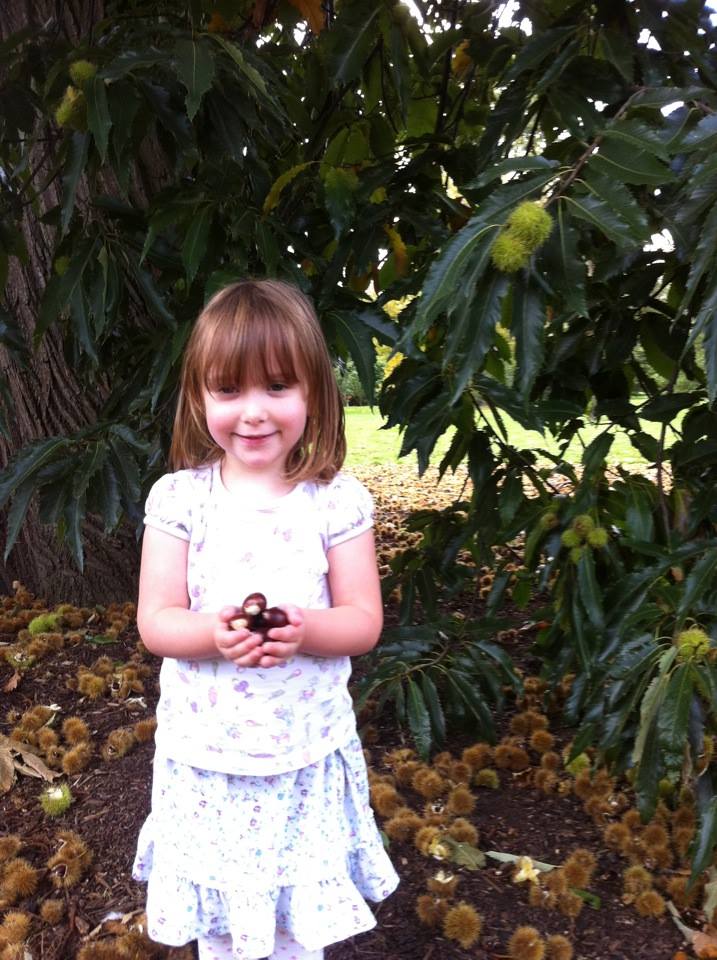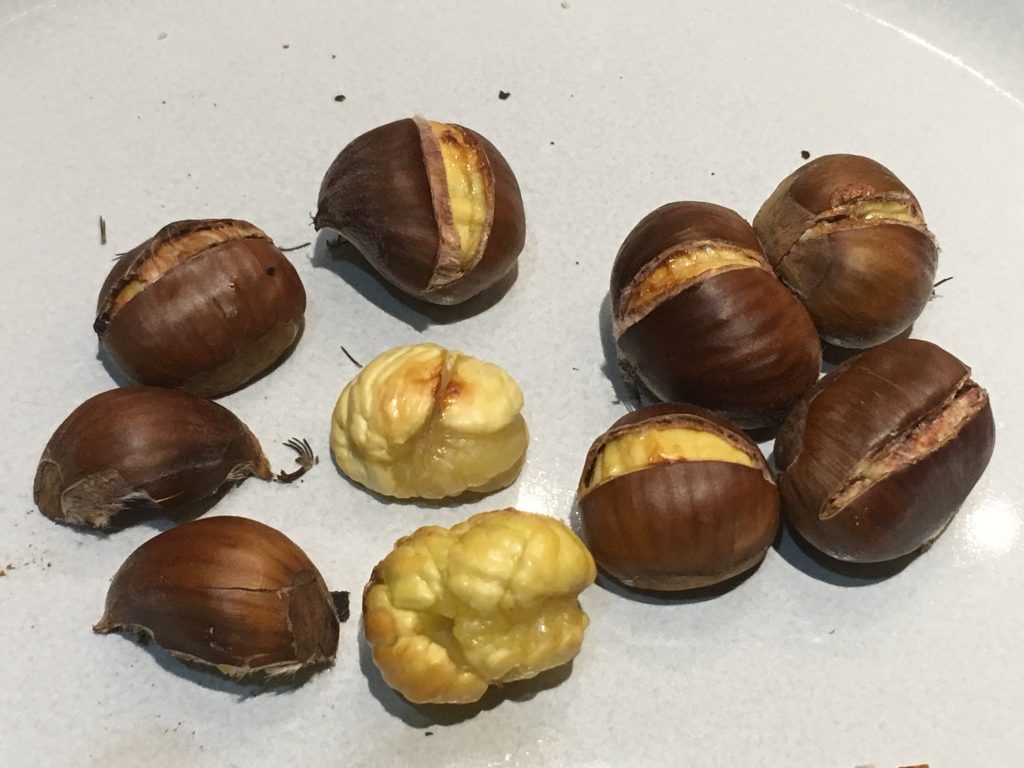When you’re in British woodlands in September-November, look for the spiky husks on the ground containing this sweet nut.
Collect them from the ground, never pick them from the tree.
We found the best way to open them is carefully stamp them open with your boot or use a large stick and try to pop the nuts out. Or wear gloves!

Collecting these with children is lots of fun. They’re certainly worth the effort.
Make sure you don’t mistake horse chestnuts, which are poisonous, for the sweet ones. Horse chestnuts, or conkers, come out of a smooth husk whereas the sweet ones are protected by spikes. Sweet chestnuts also have a pointed tip, whereas horse chestnuts are smooth all the way round.
As with everything – if you are not sure of what you are eating – do not eat them!
Nuts can be eaten freshly peeled out of their shells, or cooked.
Roasted
Score the shells across the rounded side either once, or in an X (this makes it easier to peel). Try not to cut the nut inside.
Lay them on a baking tray and bake in an oven for 15-30 minutes at 200 ℃.
Chestnuts that you find wild tend to be smaller than the ones from the shops, so it is good to check them at 15 minutes.
When they are ready the shells will split open.


June 24, 2019 at 6:36 pm
They are delicious and warm you up in the cold autumn.